We were last in El Salvador back in 2007 and its fair to say the country has been transformed since then. Our entry at the land border with Honduras was very efficient and the immigration officials very polite and positive, which immediately give you a good impression of the country. We arrived in the capital San Salvador quite late given the delays on our bus journey, but a simple Uber got us quickly and comfortably to our hotel in the West of the City close to the Monumento al Divino Salvador del Mundo.
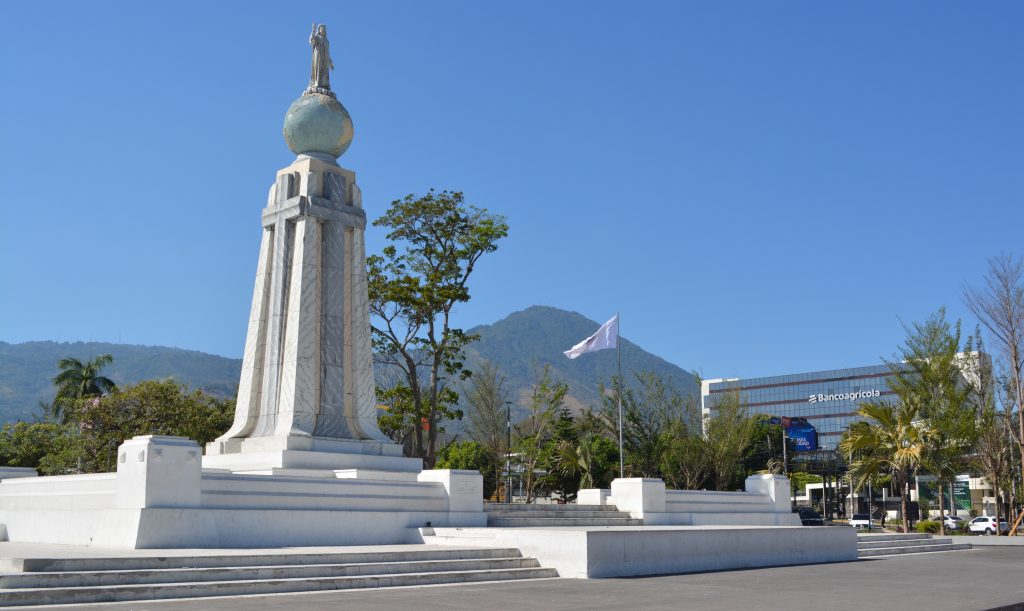
Back in 2007 the old historic centre was best avoided, today it has been cleaned up, pedestrianised and feels safe. There are many police, often in pairs and playing on their mobile phones, who provide a good feeling of security. The architecture in the main square is quite eclectic with the traditionally designed Palacio Nacional de El Salvador on one side, the modern 1960s Catedral Metropolitana de San Salvador on the North side and the modern Biblioteca Nacional on the South side.
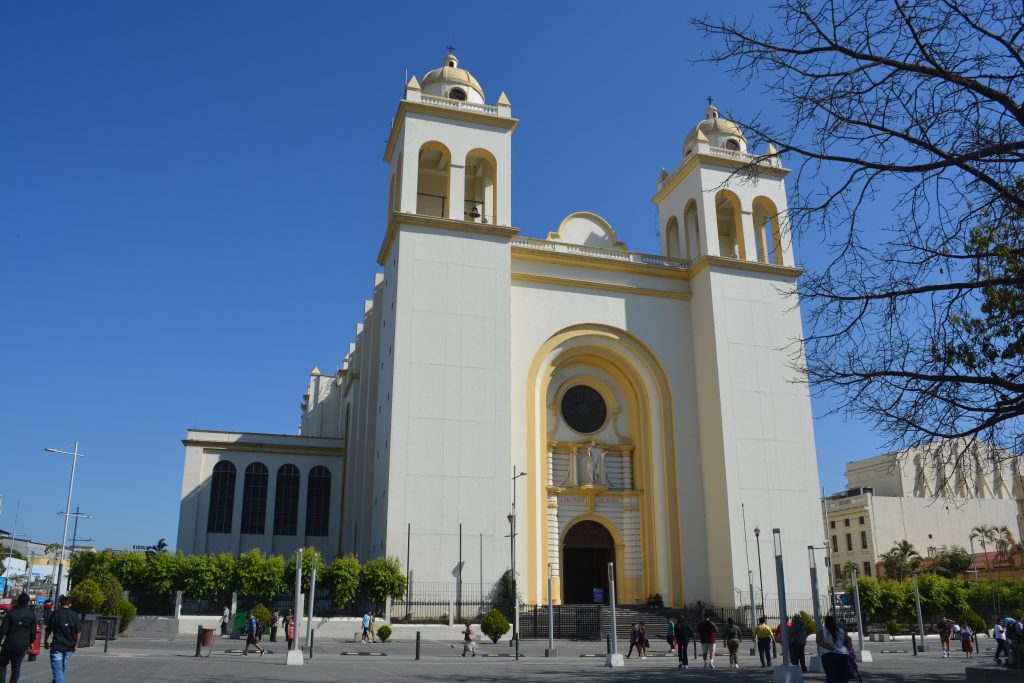
The cathedral is quite bulky and spacious and most importantly has a monument to Archbishop Oscar Romero, who was murdered by right wing nationalists in El Salvador’s civil war in 1980. Back home in the UK there is a monument to him in Westminster Abbey, such was his importance.
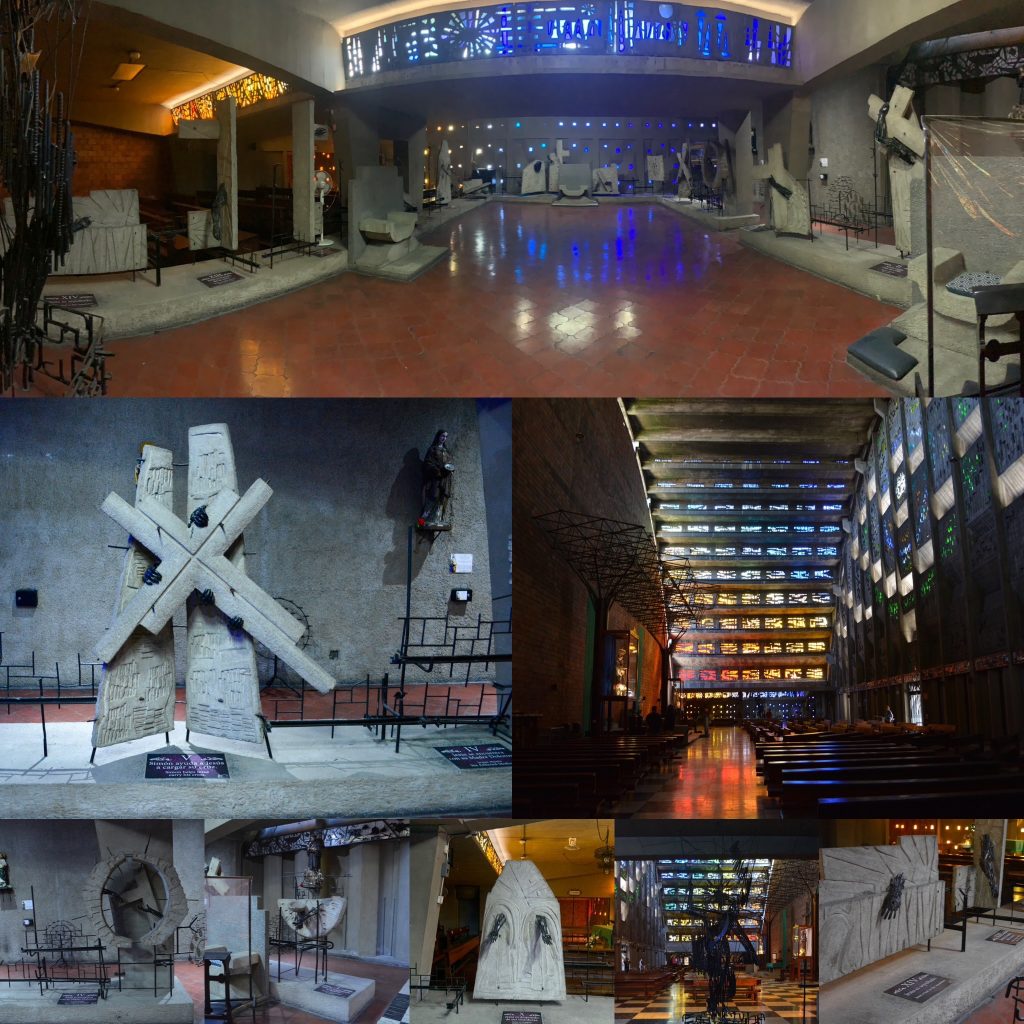
In the next square is one of San Salvador’s most impressive sites, the Iglesia El Rosario, a modern church that uses coloured light impressively to create numerous patterns and images. However pride of place is the very clever set of architecture that detail the stations of the cross. All Catholic churches have images of the stations of the cross but these ones in stone and metal sculptures of hands etc. are some of the most impressive we have seen in all the Catholic churches we have visited.

From San Salvador we travelled by a local chicken bus to La libertad on the Pacific Coast. Bus travel in El Salvador like most of Central America is confusing as there are few central bus stations and for example the relatively frequent 102 bus to La Libertad has to be hailed from the road side at various places in the capital, fortunately one of them is outside the Terminal de Buses de Occidente. The bus ticket was just USD 0.65 however for large pieces of luggage a second ticket is required. Along the route the bus soon filled up and it was standing room only. At La Libertad again there is no central bus station so you need to know where to get off the bus.

Our hotel, Hotel y Restaurante Rincón Familiar was close to the beach and had a number of swimming pools. The sand on the beach is dark due to the volcanic rocks and the sea was very warm. The Pacific coast contains gentle surf, so there are number of surfers there. The resort is fairly quiet, but there is some excellent local seafood to be had.
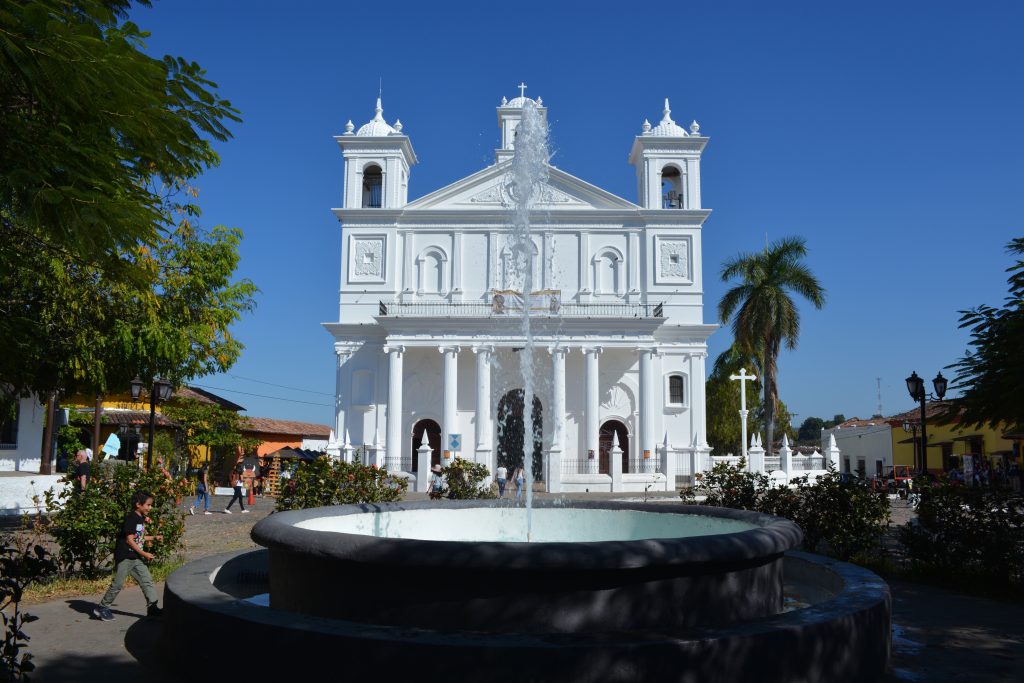
Our final destination was the hilltop town of Suchitoto to the North of the capital. To get there from La Libertad required a couple of chicken buses. Suchitoto is situated near a man made lake and is an elegant old colonial small town with a beautiful main square and nicely painted low rise buildings. In El Salvador’s dark past Suchitoto was close to a main centre of guerilla activity, but today it is one of the main tourist sites in the country. Our hotel, El Tejado had great views over the lake, definitely worth the extra to get the views, and a pool and decent restaurant too.
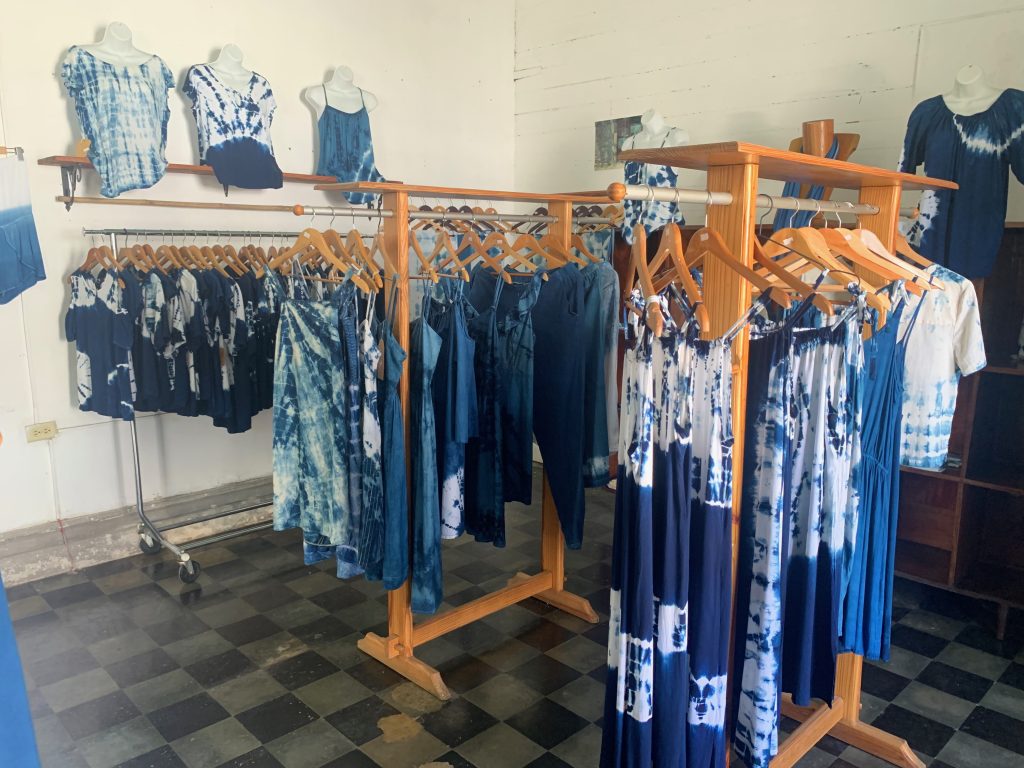
Suchitoto is also famous for the indigo dye and traditional textile industries based on the dye. Over recent years the artisanal textile industries based on the use of indigo have been resurrected, following the introduction of modern synthetic dyes. The blue in the national flag of El Salvador is indigo coloured.

Also in Suchitoto is one of the most unusual museums ever, the Museo De Los Mil Platos Y Mas which has an eclectic collection of thousands of plates and other similar items from around the world. It is definitely worth taking one of the tours around the museum to get the story of the collection, tours are conducted only in Spanish, and the enthusiasm and bits of information is well worth the visit.
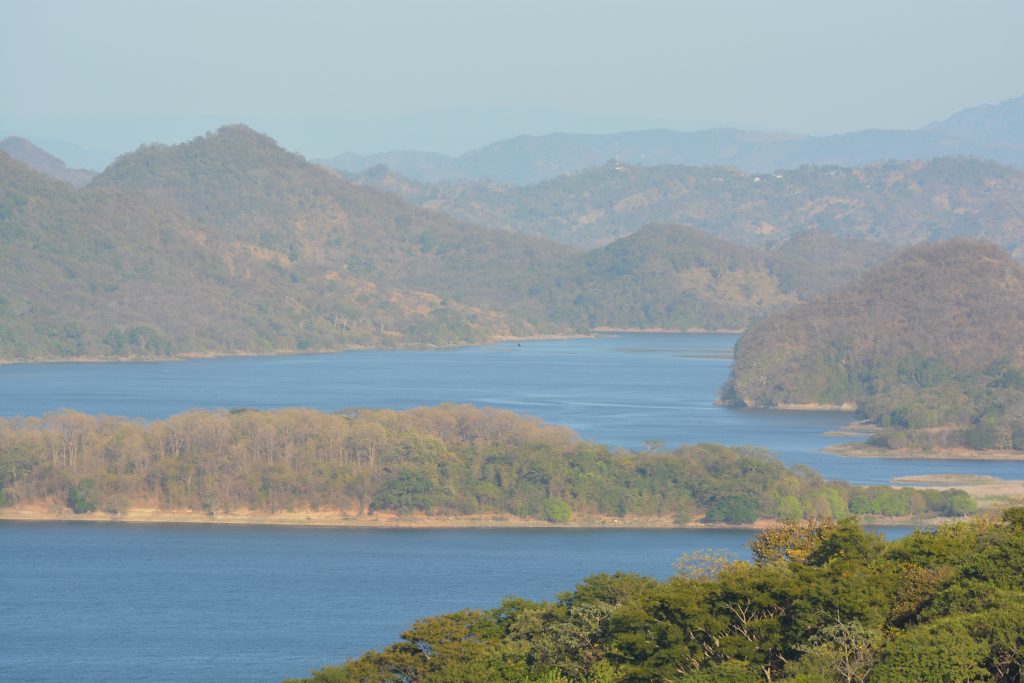
Final Thoughts
El Salvador is a country that has undergone remarkable transformation, offering visitors a blend of historical significance, natural beauty, and vibrant culture. From the revitalised streets of San Salvador and the serene beaches of La Libertad to the colonial charm and indigo traditions of Suchitoto, the journey showcases the resilience and creativity of the Salvadoran people. Whether you’re drawn to its history, unique art, or simply the warm hospitality, El Salvador is an unforgettable destination that deserves a place on your travel itinerary.
Dates: Wednesday 7th February to Wednesday 14th February 2024
